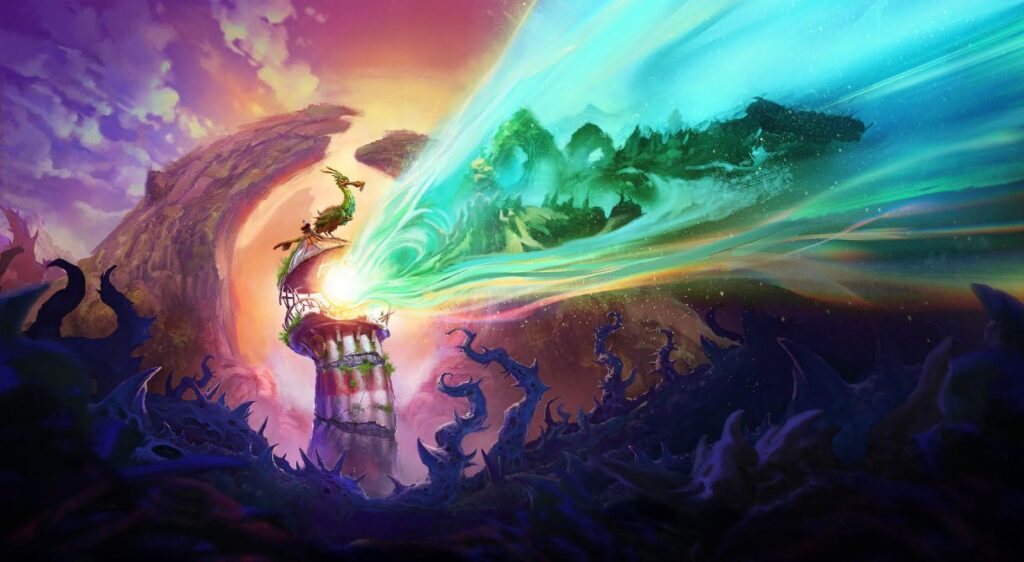Double Fine has a knack for making charming games out of the oddest situations. They’ve turned their “weird” dial to 11 with their latest game, Keeper. Instead of following a person who jumps through minds, or a rock star in a musical world, you play as a lighthouse. What really shines most here isn’t just Double Fine’s ability to make gold out of mud, but their storytelling is top-tier, and they can make a wonderfully heartwarming story without saying a word.
Keeper puts you in the bricks of a sentient lighthouse. One day, in a post-human world, this lighthouse suddenly comes to life. There’s no reason why, just the lighthouse gains sentience and begins to wriggle itself free of its base. Thankfully, it also learns it can sprout legs. Not just hop around on its side everywhere.
In this world, there is one thing that draws it, like a beacon, to something greater: the nearby mountain peak. And so, the Lighthouse, that we’ll refer to as Keeper, begins its trek up the mountain, exploring new societies and making unlikely allies to reach its goal.
Double Fine has done something truly unique with an unlikely mechanic, utilizing it to enhance worldbuilding and lore.
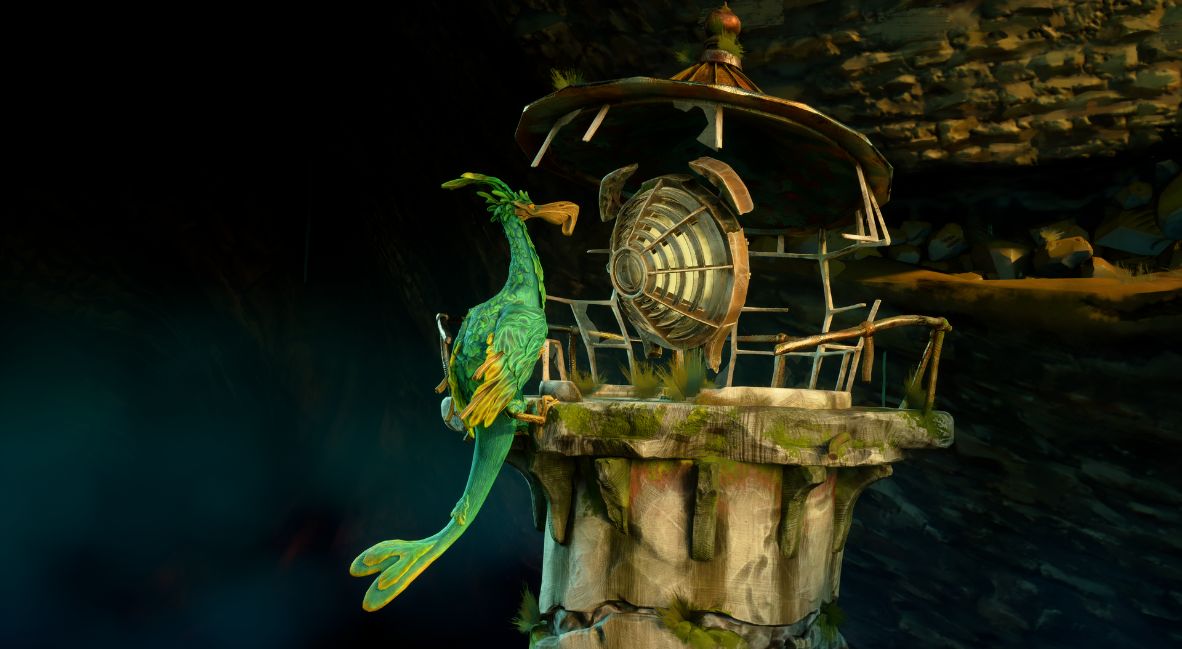
What is most shocking about Keeper is how it says so much with so little. And how Double Fine has done something truly unique with an unlikely mechanic to give worldbuilding and lore to those who seek it out. Not a single word is spoken throughout the game’s runtime. Yet Keeper’s emotions are so easily readable.
Keeper is impressively emotive. Through the use of its light as its lone eyeball, the light’s casing moves around enough to show when Keeper is happy, sad, surprised, angry, etc. And that all works so well to really understand what’s happening.
Similarly, its seabird companion, Twig, serves as a great anchor to this world. Twig shows that life has continued since the end of the human age. Life’s thriving, yet it is threatened by a corruption seeping into every corner. Twig also gives more purpose to Keeper’s journey, again by being an anchor to the living. Twig repeatedly grounds the story and is the core of the heartwarming adventure.
Keeper is a game for all ages, thanks to its engaging story and gameplay.
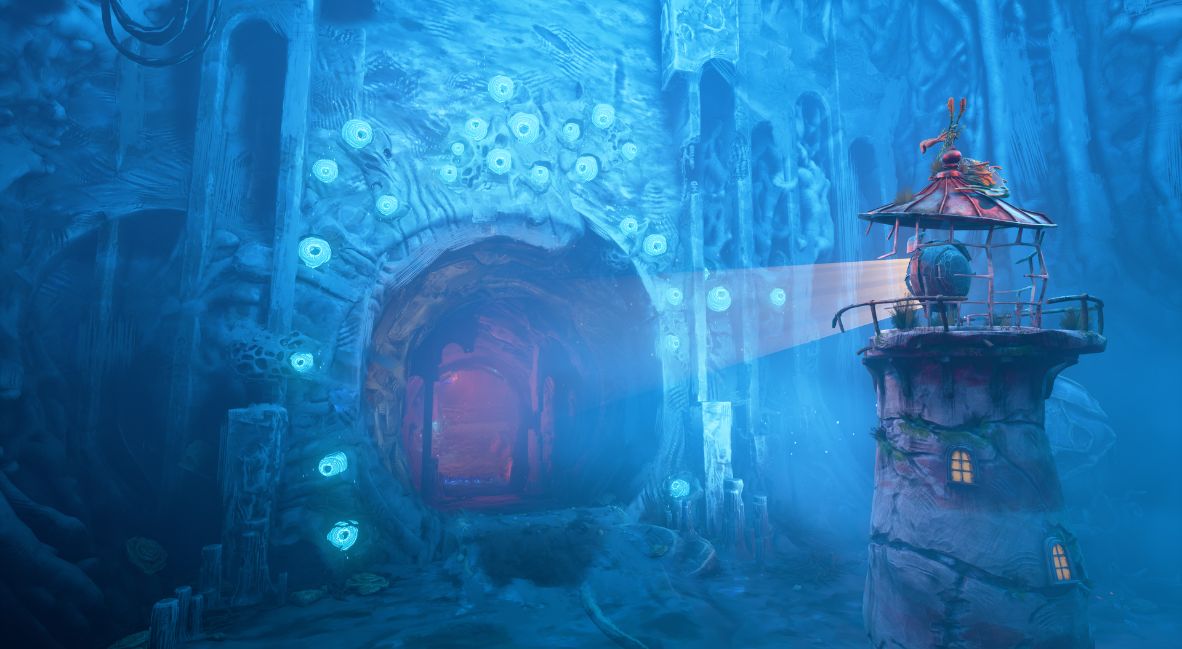
Even with no spoken words, the bond that grows between Keeper and Twig is so palpable. It is also a bond that allows Keeper to be a game for all ages, thanks to its engaging story and gameplay. It’s almost similar to Bluey. Being cute and engaging for younger minds, while having deep messaging for those who can read between the “lines”.
Ultimately, the story is what you want it to be. For me, it was about a lone soul who learned that the world was greater than itself. And the importance of a community and outside parental figures in helping a child thrive in a challenging world. Keeper having no overt story is one of its strong suits, as it allows for many interpretations that are all correct. And those interpretations can change depending on where you, the player, are in your own journey of life. Regardless, the story is inherently positive and really cuts through the deluge of darkness that is our current world.
The gameplay is equally simplistic, yet shockingly deep. As a lighthouse, your only controls are moving around the world, moving your light around to shine it on different objects, and having Twig interact with things for you. These mechanics, especially the movement, evolve as Keeper itself evolves.
Each area in Keeper is highly detailed, full of ways to explore and bring life to the world.
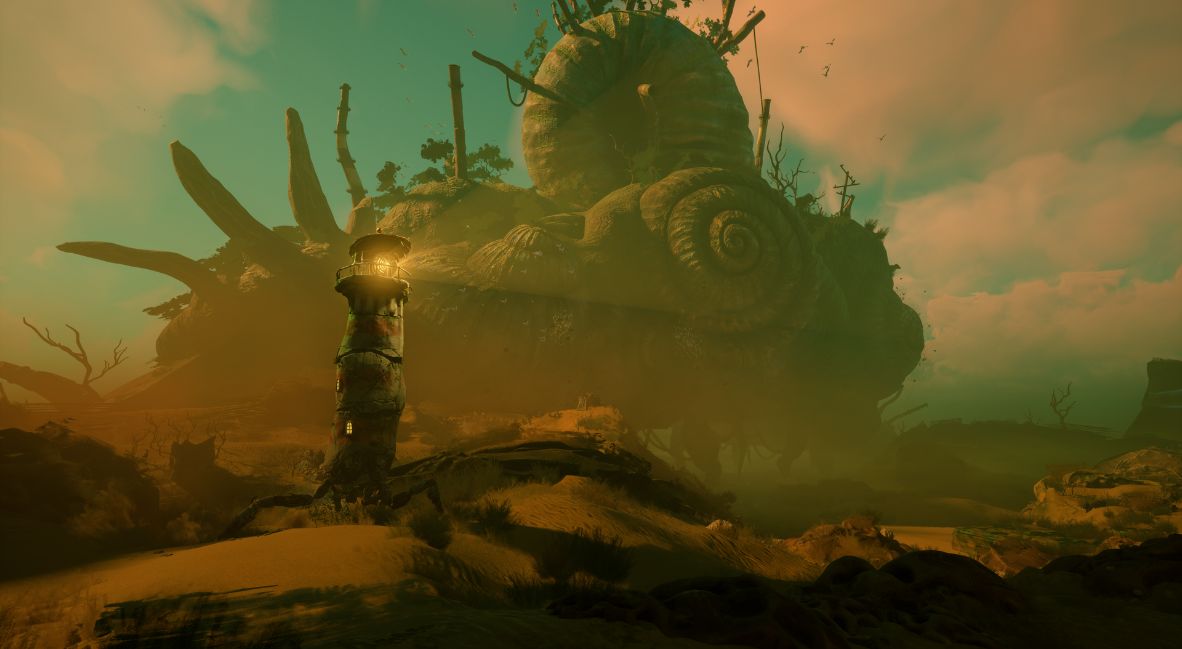
Additional mechanics are added in various areas, such as the ability to change time, but they are all ultimately derived from the base control scheme. Most importantly, there is no real combat. There are no failstates. Keeper can feel tense, but it never poses a physical challenge beyond the mental puzzles that advance the story.
It’s a very linear game at that. However, each area is highly detailed, full of ways to explore and bring life to the world. To boil the gameplay loop down, you’re mostly exploring an area, shining a light on some objects, having Twig grab something, and unlocking the way forward. How the loop plays out is ever-evolving and full of “aha” moments as you understand what is unique to how Keeper interacts with the world in each area.
This is most evident in a mid-game level where Keeper has puffy plant clouds stuck to it. Keeper can now jump and float around, expanding the vertical range of your actions. As the level progresses, air vents will need to be used to allow Keeper to go higher and reach different ledges that are required to unlock the door. Your interaction with the world inherently changes. What really makes this work is that you can get a sense of what to do from the cutscenes, but actively experimenting with the world around you lets you truly understand what to do.
Wherever you go, Keeper’s light shines on different plants or objects, letting them grow.
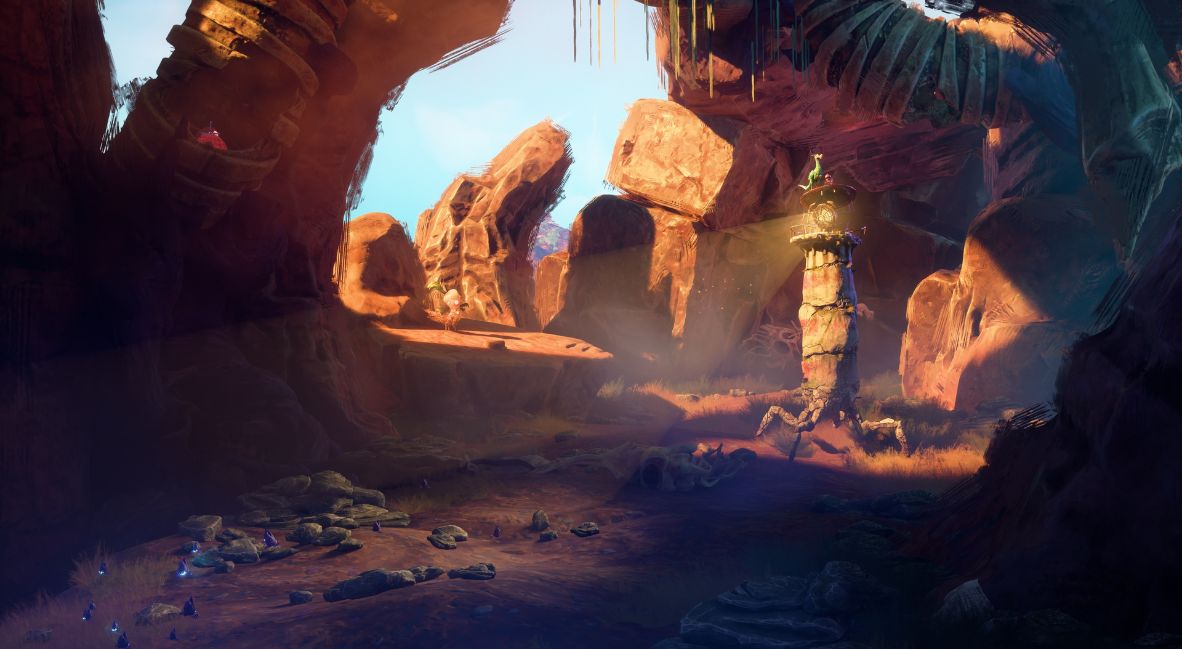
Even with basic hints popping up to remind you how to control Keeper, they never explicitly spell out what you need to do. Every solution is simple; you just need to play around with what you’ve got to make the solution come together.
Similarly, the world is a living creature in its own way. While full of darkness and corruption, Keeper serves as a new light, hope, and change. Little interactions highlight this so well, especially with how the light makes the world feel more alive. Wherever you go, Keeper’s light shines on different plants or objects, letting them grow. They glow, they produce spores, and they sometimes lead the world’s residents to help you.
There were numerous times where the joy of playing Keeper came from just shining the light on different objects, bringing more color to an area, as much as advancing the story. Even if the controls can feel clunky at times, they are still easily overcomeable, adding to the immersion of controlling something that’s living its first day. The light, too, plays a key part in a very unique way of storytelling that Double Fine utilized in Keeper by unlocking lore-rich achievements.
Occasionally, you’ll come across hidden areas with statues. Shining a light on a plant near the statue leads the plant to rebuild it. Each of these hidden interactions unlocks an achievement. The description of that achievement and its name aren’t just basic “statue name: built X statue”. It’s a sentence-long narrative about this world. Finding each of them as you play slowly builds a historical narrative about what came before, how some of the creatures interact with each other, and why some of the objects you interact with operate the way they do.
The world of Keeper and its numerous environments are jaw-droppingly beautiful.
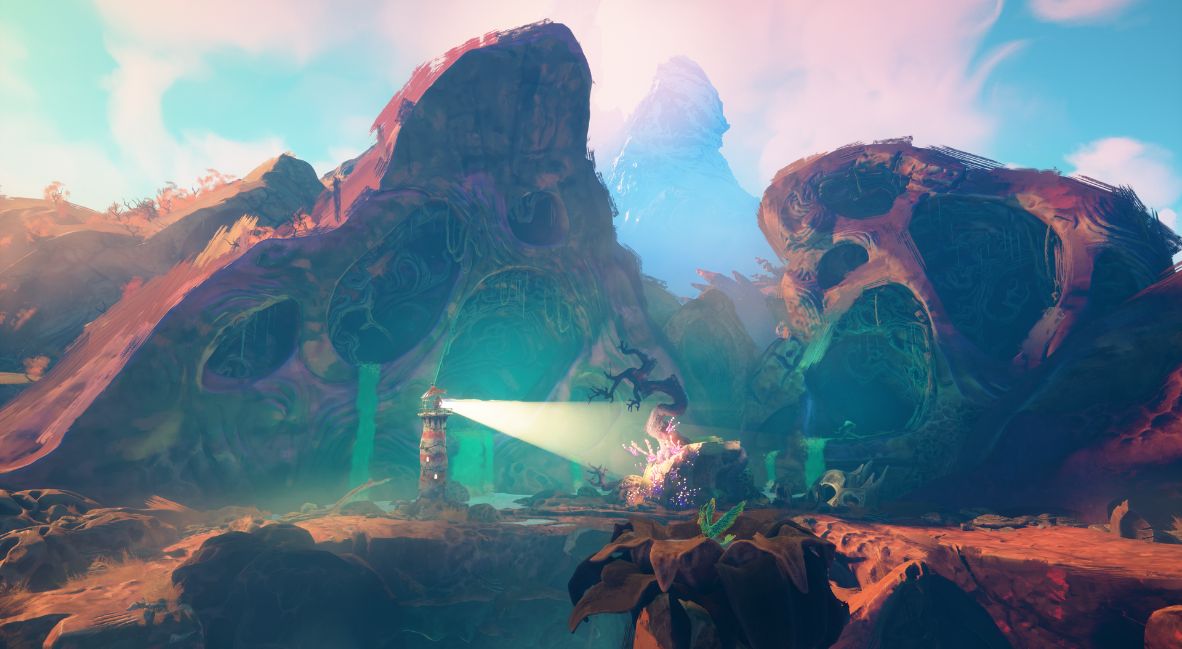
Using achievements in this way is just downright clever. More games need to use achievements in similar ways, not just to reward you for doing something different, but to add to the world. Additionally, keeping the text focused on the achievement contributes to the unspoken narrative of the story you experience.
Finally, the world and its numerous environments are jaw-droppingly beautiful while remaining Double Fine weird. They’ve struck a good balance of making the world feel familiar while also seeming alien. The amount of detail in the environment is impressive. The world doesn’t just feel like its time is only moving from the time you hit Play to the time you hit credits. It evolves over the course of the playthrough, and has fine details scattered throughout that show its ancient history, while also giving teases as to how everything will live on once you end Keeper’s journey.
Keeper is pure Double Fine brilliance. They don’t just convince you to care about a lighthouse, but their bird companion, too. Plus, the weirdness of the world somehow highlights the absurdity of playing a sentient lighthouse, making it fit together. While questions aren’t really answered, that ultimately doesn’t matter. Double Fine has created a story that aims right at the heart of players of all ages, letting you get exactly what you want after you reach the peak.
Keeper is available on October 17th on Xbox Series X|S and PC.
Keeper
-
Rating - 9/109/10
TL;DR
Keeper is pure Double Fine brilliance. They don’t just convince you to care about a lighthouse, but their bird companion, too. While questions aren’t really answered, that ultimately doesn’t matter.

